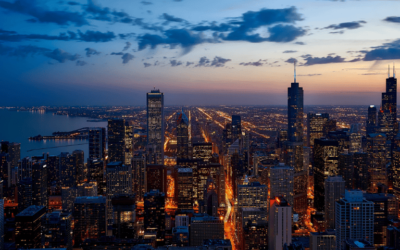The importance of lighting is often underestimated in the facet of buildings, outdoor spaces, and interiors. It can serve to enhance, detract, annoy, highlight, or even hide certain features. Even more important, lighting can play a crucial part in the energy consumption and environmental footprint of a building or space. Let’s examine different ways that LED lighting solutions can be used for both interior and exterior applications, and how LED lighting technology can decrease a building’s consumption and footprint.
Don’t Underestimate the Importance of Lighting
Using LED lighting technology for aesthetic purposes.
LED lighting has been used for some pretty significant applications. On commercial buildings, roadways and in sports complexes. LED lighting is used in unique ways to help enhance the experience of employees, travelers, and fans.
Lighting can impart a certain mood.
In addition to aesthetic purposes, lighting also has the ability to impact mood. For instance, having the ability to dim lighting, or change the lighting temperature for certain times of the day can impact employee mood and productivity. Consider LED office lighting to improve the work environment.
LED lighting can be used indoors to accent features.
LED lighting technology is great for highlighting key features in a business setting. For instance, we have all seen interior LED lighting that is used to showcase particular products in a retail environment. This technology can be used to draw attention to accent key high-profit products.
Why Use LEDs?
LED lighting technology is superior to conventional lighting solutions in three important ways: decreased maintenance costs, higher quality lighting, and reduced energy consumption. In addition, LED lights come in a wide variety of colors, fixtures, hues, and shapes, and a custom-built LED lighting solution is accessible for many organizations.
Reduced maintenance costs with LED lighting solutions.
Did you know that LED lights last four to forty times longer than conventional technologies? What this means is that organizations do not need to spend as much money on parts and labor to replace bulbs burning out.
Improved lighting quality.
Many types of conventional bulbs fall short of LED technology in parameters such as color rendering index (CRI), foot-candles, and more. LEDs can provide light that is warm, cool, directional, and accurately displays color.
Reduced energy consumption with LED lighting fixtures.
LED lighting uses a different technology (electricity rather than fuels and gases) than most other lights, and this makes it much more efficient. Another quality that decreases required energy is that LEDs are directional, which means that they can output light towards a desired 180° or less, as opposed to emitting light in 360° with much of that being wasted.
The Importance of Lighting Conclusion
In conclusion, we can see the numerous reasons for lighting, it helps to enhance the aesthetics of our space, it can help to simulate a mood for our visitors and patrons, and it can be used to accent certain features that you would like to bring attention to. Finally, using LED lighting can help to decrease your energy consumption, lower your maintenance bill, all while increasing the overall performance of your lighting. To learn more about how Action Services Group can help your organization, please reach out to us, we would be more than willing to put together a free no-obligation quote for your company. Contact Action Services Group by calling 610-558-9773, email [email protected], or schedule a call.







































0 Comments